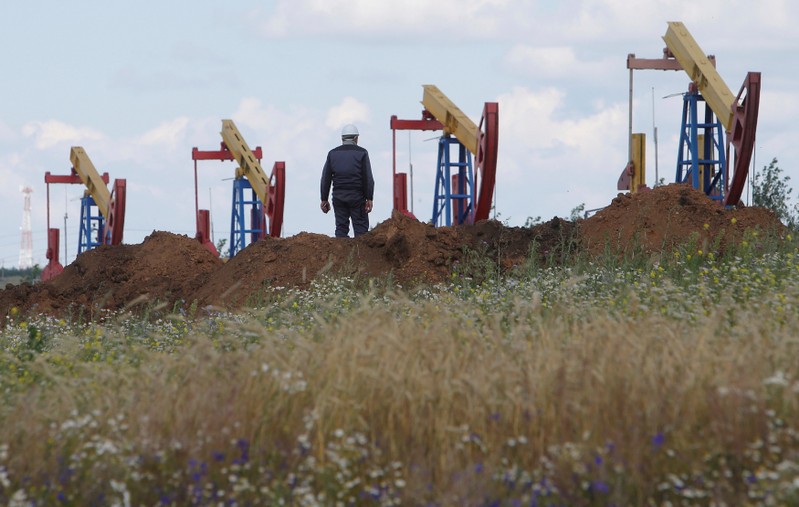
FILE PHOTO: A worker stands in front of pump jacks at the Ashalchinskoye oil field owned by Russia’s oil producer Tatneft near Almetyevsk, in the Republic of Tatarstan, Russia July 27, 2017. REUTERS/Sergei Karpukhin/File Photo
November 17, 2017
By Henning Gloystein
SINGAPORE (Reuters) – Oil prices steadied on Friday after recent declines, but were on track for their first weekly fall in six weeks as concerns about surging U.S. supplies put a dent in the market’s recent rally.
Brent crude futures <LCOc1>, the international benchmark for oil prices, were at $61.31 per barrel at 0136 GMT, down 5 cents from their last close. U.S. West Texas Intermediate (WTI) crude futures were at $55.32 a barrel, up 18 cents, or 0.3 percent, from their last settlement.
Still, Brent was on track to fall around 3.4 percent for the week and WTI 2.5 percent on worries about growth in U.S. production and inventories, after both benchmarks touched near two-and-a-half year highs last week.
Crude markets have received general support in the past months by the Organization of the Petroleum Exporting Countries (OPEC), which together with some non-OPEC producers including Russia has been withholding production since January in order to tighten the market and prop up prices.
This has lead to an almost 40 percent rise in Brent prices since June.
“The production cut agreement between some OPEC and non-OPEC oil producers led to a drop in inventories and to a recovery of oil prices,” Dutch bank ABN Amro said.
“In the course of 2018 we expect a continuation of the oil price rally towards $75 per barrel,” ABN said.
The deal to restrain output is due to expire in March 2018, but OPEC will meet on Nov. 30 to discuss policy.
It is expected to agree an extension of the cuts as storage levels remain high despite recent drawdowns.
“The problem is still that oil stockpiles are above the five-year average,” said William O’Loughlin, investment analyst at Australia’s Rivkin Securities.
Khalid al-Falih, the energy minister of Saudi Arabia, which is OPEC’s de-facto leader, said on Thursday that “we need to recognize that by the end of March we’re not going to be at the level we want to be which is the five-year average, that means an extension of some sort.”
OPEC’s main obstacle in tightening the market is the United States, where crude oil production <C-OUT-T-EIA> hit a record of 9.65 million barrels per day (bpd) this month, meaning output has risen by almost 15 percent since their most recent low in mid-2016.
Traders said they were looking for a weekly U.S. drilling report published by oil services firm Baker Hughes for market guidance.
“Tonight’s Baker Hughes oil rig count will give another update on the near-term U.S. supply picture,” said Stephen Innes, head of Asia/Pacific trading at futures brokerage OANDA.
(GRAPHIC: Global crude oil supply & demand balance, http://reut.rs/2zCLx75)
(Reporting by Henning Gloystein; Editing by Joseph Radford)
